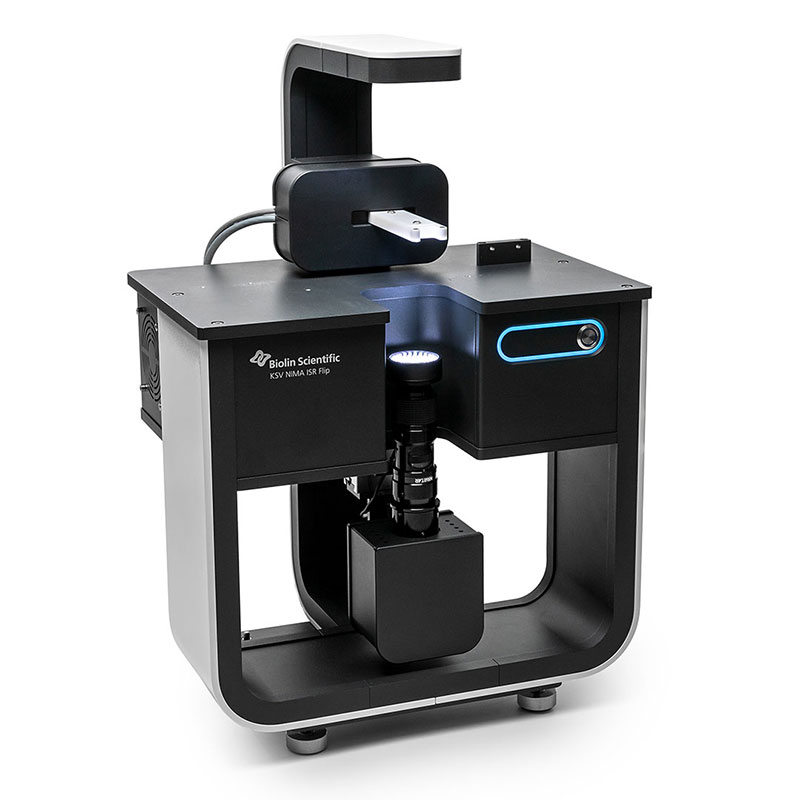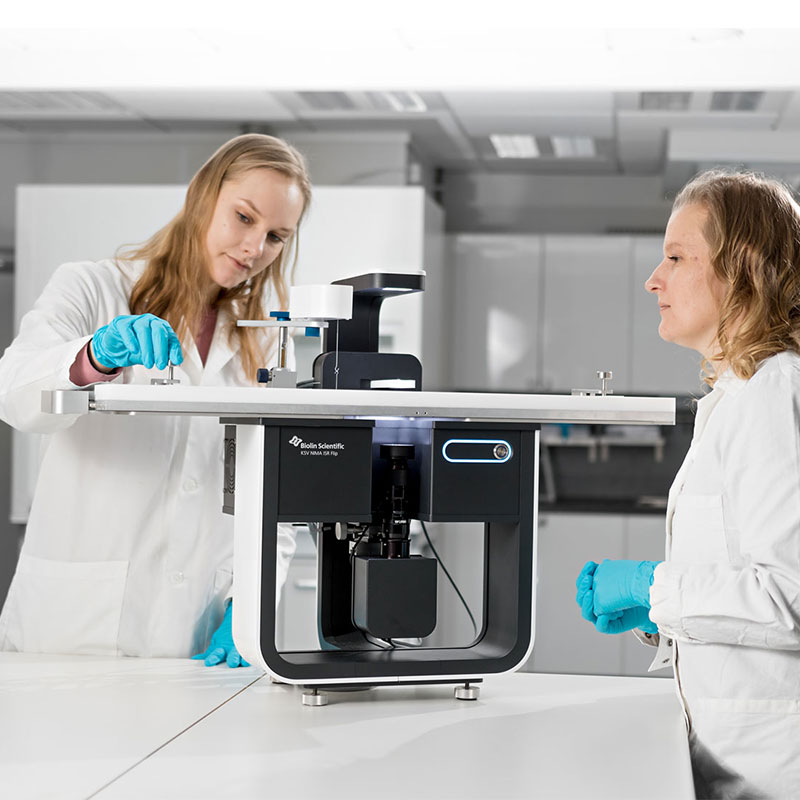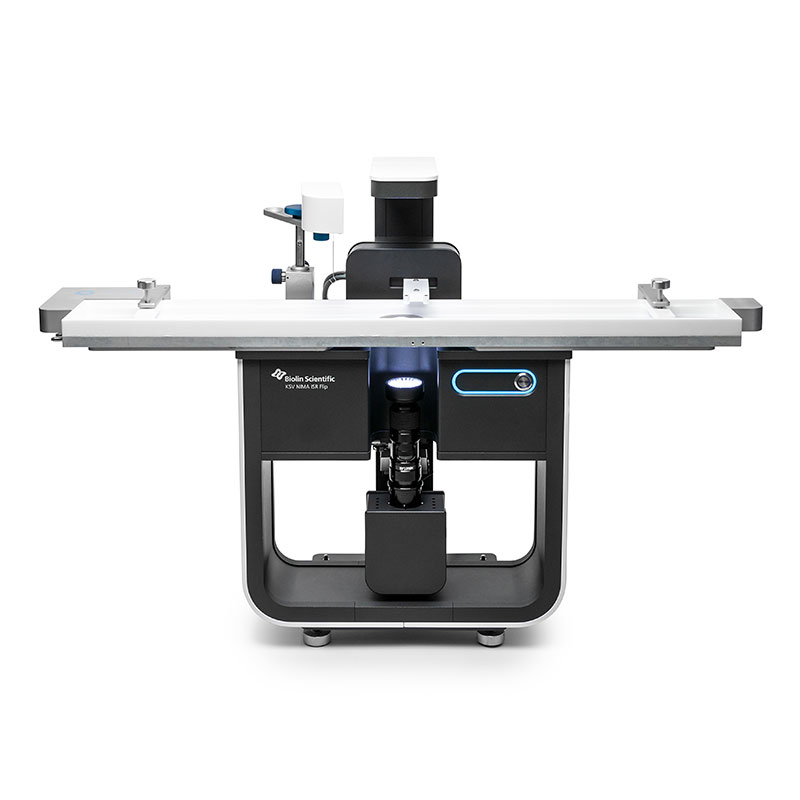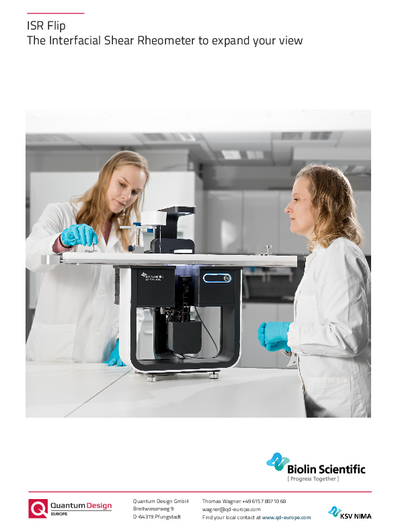Interfacial Shear Rheometer ISR Flip
from KSV NIMAExpand your understanding of interfacial layers with ISR Flip from KSV NIMA. This next-generation interfacial shear rheometer enables highly sensitive measurements of interfacial viscoelasticity. Both at air-liquid and liquid-liquid interfaces.
- Prediction of emulsion, froth and foam stability
- Real-time monitoring of surface reactions
- Determination of thin film structure
- Continuous monitoring of molecule adsorption into interfaces
- Examination of phase transitions
Further information
Highly sensitive measurements
The lightweight magnetized probes enable highly sensitive measurement with minimum interaction between the instrument and the probe.
Full control of the probe
The magnetic trap keeps the probe positioned even through a long experiment or during procedures such as monolayer spreading. The strength of the trap can be precisely controlled by moving the trap closer or further away from the probe. This also enables wide moduli and frequency range for a single probe.
Expand your measurement possibilities
ISR Flip supports two camera positions to suit more purposes. Combining the instrument with a Langmuir trough allows the control of the monolayer packing density. The same trough can be used for both air-liquid and liquid-liquid measurements.
Applications controlled by interfacial rheology, including:
- Biological systems such as pulmonary lung surfactant and meibum. Their functionality is largely based on their flow on interphases under stress.
- Emulsions and foams whose stability is vital for their functionality. Viscoelasticity of the liquid-liquid interface can predict the stability of a colloidal system. Micelle/droplet fusion and fission are largely dependent on the interface viscoelasticity.
- Food products, cosmetics, biophysics, pharmaceuticals, oil and gas, application areas where molecules at interfaces have a significant impact on the system performance.
Langmuir monolayer structural studies, including:
- Phase changes, as the viscoelasticity of the layer is strongly affected by the microstructure of the monolayer.
- Surface reactions such as crosslinking in real-time, as changes in molecular size and shape have typically a strong response in their rheological properties.
- Aggregation and adsorption, as they typically change the viscoelasticity of the film.
Specifications
| Measurements | |
| Frequency range (Hz) | 0.01 - 10 |
| Dynamic moduli range (N/m) | 2x10-8 - 1 |
| Dynamic moduli resolution (N/m) | 1x10-8 |
| Strain range (%) | 0.04 - 20a |
| Instrument | |
| Camera | USB 3.0 digital camera with zoom |
| Camera resolution | 1980 x 1200 |
| Field of view (Φ, mm) | 4.7 mm x 2.93 mm / 0.73 mm x 0.45 mm |
| Instrument dimensions (LxWxH, mm | 400 x 280 x 600 |
| Weight (kg) | 21 |
| a The strain range is dependent on the channel width. For low volume the range is 0.08 - 40 | |
Model specification
| Langmuir Troughs | ||
| ISR Flip High Compression | ISR Flip Low Volume | |
| Surface area (cm2) | 588 | 13.2 |
| Trough top inner dimensions, lower phase (LxWxH, mm) | 784 x 75 x 10 | 120 x 11 x 6.5 |
| Trough top inner dimensions, upper phase, (LxWxH, mm) | 784 x 95 x 7 | 120 x 19 x 6 |
| Lower subphase volume (ml) | 588 | 4.7 |
| Upper subphase volume (ml) | 521 | 13.9 |
| Maximum compression ratio | 7.8 | N.A. |
| Barrier speed (mm/min) | 0.1 - 270 | 0.1 - 270 |
| Balance measuring range (mN/m) | 0 - 300 | 0 - 150b |
| Maximum balance load (g) | 1 | 1 |
| Balance resolution (μN/m) | 0.03 | 0.04b |
| Instrument dimensions (L x W x H, mm) | 908 x 280 x 600 | 400 x 280 x 770 |
| b Pt-rod has to be used with the low volume cell | ||
Downloads
Videos
Contact








